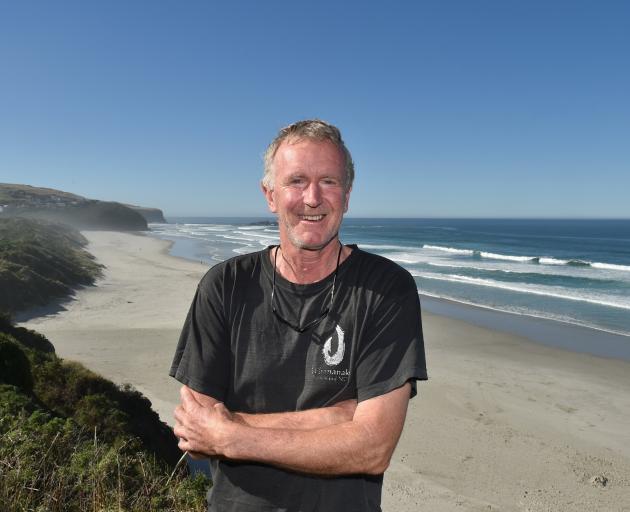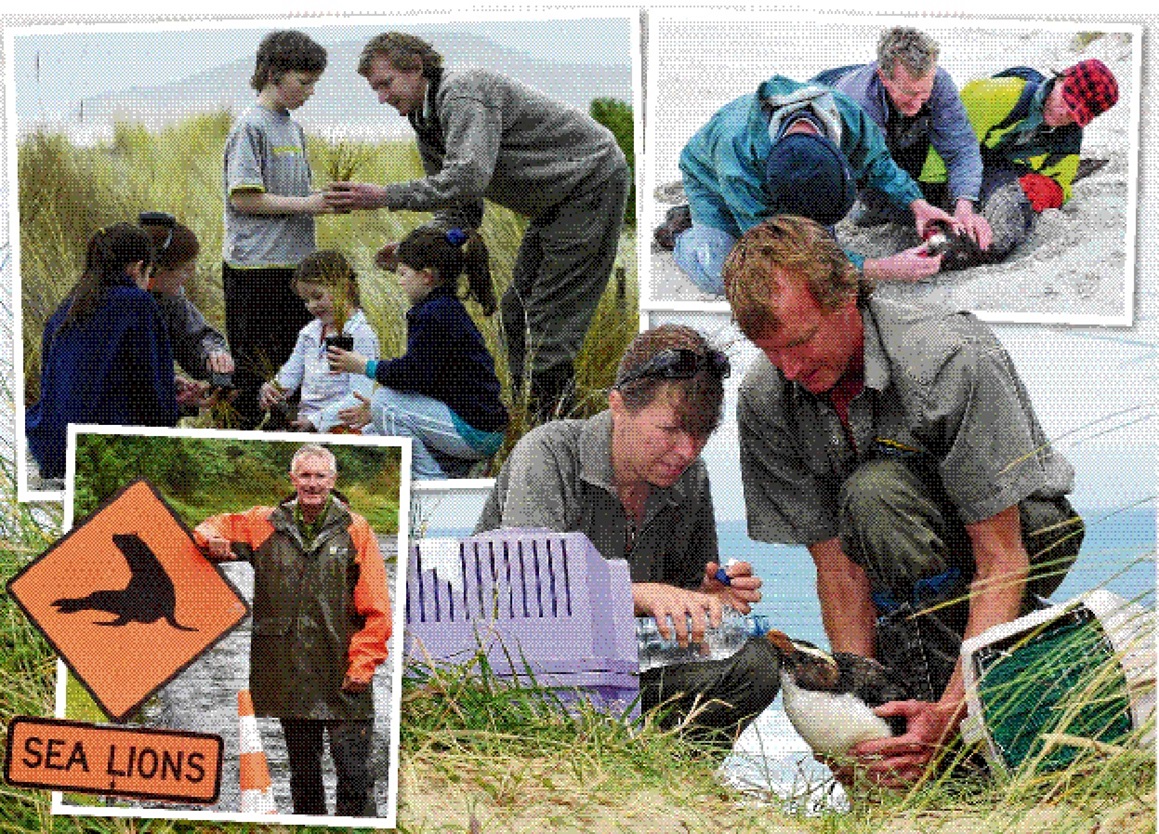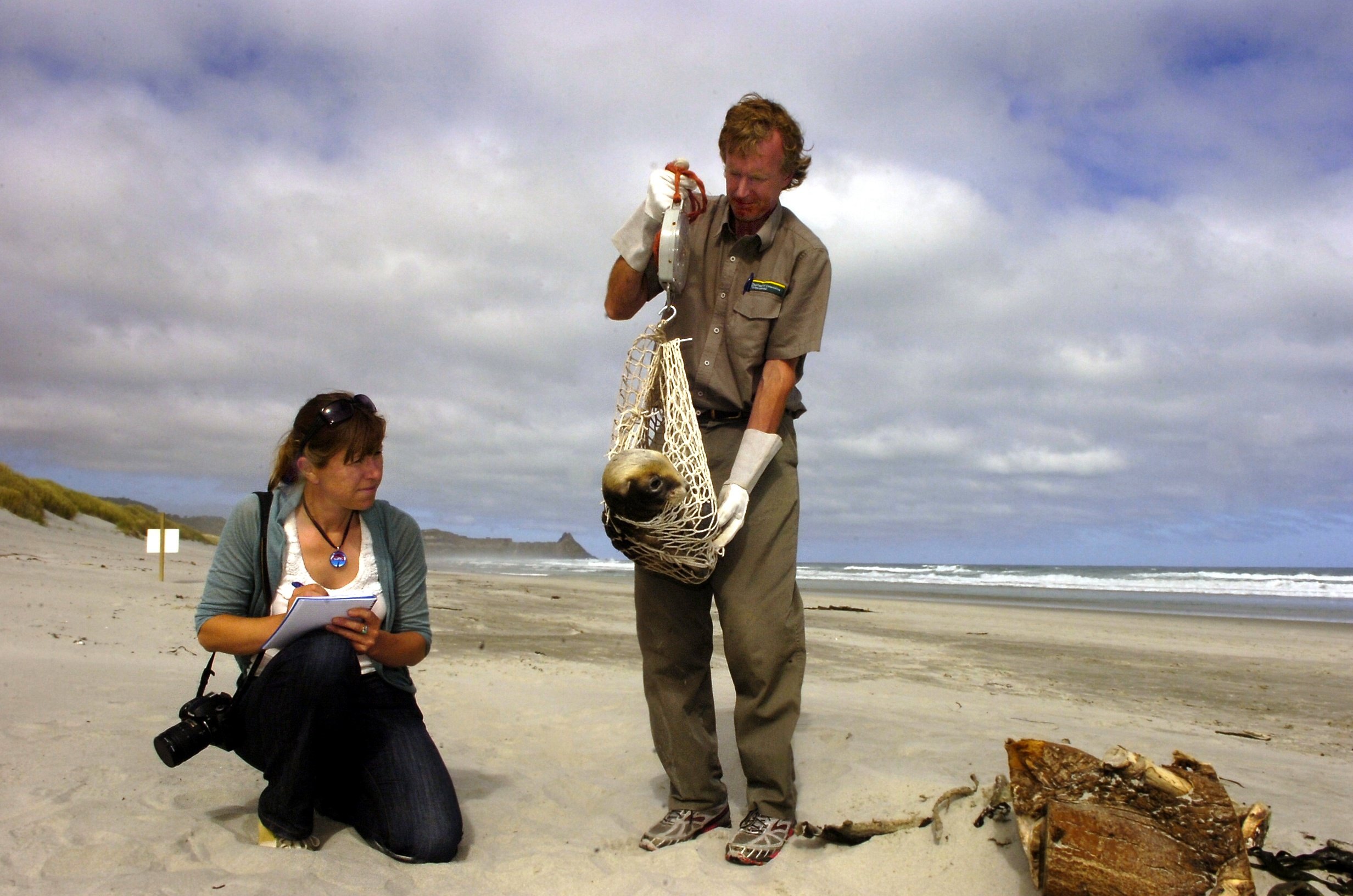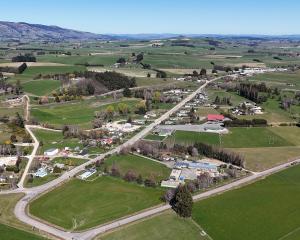
Department of Conservation ranger Jim Fyfe was used to dealing with all sorts of issues but a seal in a G-string at Lover’s Leap? He couldn’t have made it up.
Fyfe had been in the job 13 years when he was called to a coastal arch on Otago Peninsula where a young fur seal had been seen with an object around its neck.
Guided by moonlight, he and a colleague scrambled down a steep, greasy bank and removed the skimpy item of clothing.
A couple of days later, he was questioned by an Otago Daily Times reporter about whether it was a thong or a G-string, then it made international news, he says.
While British tabloid The Daily Mirror gushed about a frisky couple leaving underwear at a local beauty spot and environmentalist magazine Grist declared losing your bikini bottoms in the ocean wasn’t just "sexy/embarrassing", it was a potential ecological hazard, DOC staff formulated a plan.
Keen to make the most of the publicity, they decided to auction the item; the proceeds would be used to help eradicate mice from the Antipodes Islands.
"So it got more media," he says. "Then someone got hold of a photo of this bunch of fabric touted as a G-string and said they thought it was part of a hat that had deteriorated."
"[Comedian] Te Radar said he felt sorry for the wives of the poor rangers in Dunedin who couldn’t tell a G-string from a hat. And the auction fell quite flat at that point.
"The hazards of working with marine mammals," he says, with a laugh.
At 59, Jim Fyfe has been at the forefront of conservation along Otago’s coast for more than two decades. A recipient of the Wild Dunedin Hero Award, he is best-known for his work monitoring and advocating for the threatened New Zealand sea lion. Although he recently retired from the Department of Conservation, he plans to continue to work in coastal and marine conservation.
When the Otago Daily Times caught up with him, he was in his "new habitat", the Dunedin villa that he has lived in since 1999 but is learning to share on a more full-time basis with wife Kuini.
At the back of the house, a recently-completed deck doesn’t overlook the sea, as you might expect, but apple trees, quince trees, figs and feijoas.
"The feijoas are a touch of Northland, which is where I’m from," he says. "They were so common there they became missiles [for play fights] on the way home from school."
Fyfe was born just south of Whangārei, but his love of snorkelling and sailing began at a bach on the coast at Whananaki.
"Growing up in a rural area gives you a sense of being part of a community and of service to the community," he says, adding he was aware from a young age of the great divide in Northland between the haves and have-nots.

It’s an ideal that has been front of mind during his 20 years of voluntary involvement with Quarantine Island/Kamau Taurua, a public recreation reserve in Otago harbour: "In a city, you can lose that connection with environment."
Raised by a rural vet and a science teacher, Fyfe developed "strong ethics in terms of animal welfare, an interest in ecology and natural environments, and a sense of injustice when other people weren’t valuing those things."
For a brief period, he entertained the idea of being an "educated beach bum". But, watching The Undersea World of Jacques Cousteau on television, he was captivated by the field of marine science.
Back inside the house, he picks up a piece of driftwood he found on a beach in south Westland. Shaped by water and wind, it looks remarkably like an outline of a New Zealand sea lion/pakake. He discovered it in 1987 — before any female sea lions were on the mainland — and says it was a tohu or sign.
Once widespread along the New Zealand coastline, there was scant evidence of surviving sea lion populations by the time Europeans arrived.
The species clung to existence in the subantarctic, where more than 90% of breeding still occurs; Fyfe has spent time tagging animals on the Auckland Islands and Campbell Islands as well as Port Pegasus on Stewart Island/Rakiura.
But in 1993, a lone female came ashore at Taieri Mouth and gave birth to the first pup born on the mainland in more than 200 years. Known as Mum, she produced pups on the Otago coast until 2010 — establishing seven generations of sea lions and a dynasty of breeding females that today numbers about 40.
Experts hope the annual breeding season in Otago could help halt the decline of what is the world’s rarest sea lion species. But the mammals have returned to an environment very different to the one in which they evolved. The Otago coast is now lined with roads and houses, bustling with vehicles and humans.
In recent years, they have taken up residence at a local golf course, wandered across busy roads, disrupted a football match and frolicked in the St Clair saltwater pool. Determined to find safe places to give birth and to hide from amorous males, the females often push inland.
In the past 10 years, breeding has ramped up to the point rangers know "responsive work" will be needed over summer, Fyfe says. In 2015, 11 pups were born but most were still on Otago peninsula.
"Now we expect three times the number of pups and at least 10 of those to be in public areas."
Late last year, he guided a pregnant sea lion named Mikah from a backyard near the Dunedin Ice Stadium to the shelter of a local park. But instead of giving birth there, the animal did so on a front lawn in Normandy St and later lay across the bike track in a nearby playground.
"We went and put up cones," he says, adding with a laugh that expecting sea lions on roads could be seen as training for Dunedin’s future drivers.
Segregating the mammals from human activity is not easy, so as increasing numbers appear in urban areas, people will need to adapt their behaviour to accommodate them and education will be key.
While many Otago residents support conservation efforts, interactions between humans and sea lions are not always friendly. The animals have been harassed by dogs and struck by cars while crossing roads. Six have been shot and another was stabbed to death.

"I feel quite angry at an adult community that makes a joke out of irresponsible behaviour and that doesn’t set appropriate standards for our young people coming through . . . "
It’s exciting to see the steady increase in the number of breeding females and, hence, the number of pups being born, in Otago, he says. However, 30 pups a year is still a small number for a species whose threat status was recently escalated to "nationally endangered", the second-to-last step before extinction. The main breeding population in the Subantarctic Islands is declining and the adult population is thought to have fallen below 5000.
"Fishing and climate change may be impacting directly or indirectly, reducing food and therefore increasing competition."
Of course, it’s not only sea lions that Fyfe has been involved with.
About 100 whales and dolphins have stranded on the Otago coast in the past 25 years. When they need to be disposed of, DOC ensures both cultural and research interests are accommodated.
Last July, a 5m-long spade-toothed whale washed ashore near Taieri Mouth. Only six specimens had ever been documented and it was the first time one was able to be dissected: "It was so exciting to have this much-anticipated rare whale turn up on my watch and to be in a position where we could work in partnership with Ōtākou Rūnaka to learn so much about it."
Other species, such as the yellow-eyed penguin/hoiho, need intensive management and the help of the Dunedin Wildlife Hospital to ensure they survive.
"Often it feels like we’re the ambulance at the bottom of the cliff," he says.
"We’re working hard at the local coal face when what’s happening at sea is probably more significant . . . Obviously, we need to be doing more to stop runaway climate change but that’s a long-term project and in the shorter term, it’s reconsidering how we use the ocean’s resources."
Resource management and community partnerships have been recurring themes since Fyfe took up a two-year contract with DOC in 1990. He returned in 1999 after completing his masters in marine science and eventually became a coastal Otago biodiversity ranger.
One of his first roles was helping to implement the Kāi Tahu claims settlement, which included working with Kāti Huirapa Rūnaka ki Puketeraki as land on Huriawa Peninsula near Karitane was returned to the iwi.
Then, when the rūnaka established a committee to manage the East Otago Taiāpure — a local fishery of special significance to Māori — DOC was invited to advise on conservation interests in the area.
He also looked at marine reserve options for Otago, feeling disappointed when a proposed reserve at Nugget Point did not happen but optimistic about a new approach that could result in a regional network of reserves.
"Conserving what is special in coastal and marine areas, used by so many for so many different reasons, requires knowledge, communication, compromise and patience," he says. "We become so familiar with the places we visit and appreciate that we might not stop to consider what they may have been like, or how they could be managed differently to restore values."
For management, a particular challenge is "resourcing engagement at a meaningful scale".
Fyfe was at university when the Resource Management Act was first being discussed. Recently, it has been criticised for delaying projects but community engagement takes time and the legislation has sparked some important conversations, he says.

As a volunteer, the father of two has fostered children’s interest in nature through the Kiwi Conservation Club, helped restore natural habitats and shared environmental practices with thousands of people visiting Quarantine Island.
Working with people in coastal areas has been a privilege, he says.
"There was a colleague who left some years ago who said, ‘There’s no substitute for time in the field’, which I completely agree with . . . But my message would be, conservation happens with our communities."
As he has got older, he has struggled with bureaucracy. But he will continue to work in conservation and hopes to find ways to "make it work" financially.
"I want to have a wider focus than what working within a government department will allow.
"I’ve got good networks with coastal communities that are doing really good work so there are opportunities to have more freedom to follow my own interests."
An "active relaxer", he also plans to spend more time camping, tramping, swimming and running. Overseas travel beckons and for the first time in many years, he and his wife will be able to take an extended summer holiday.
Some people leave their jobs with stained coffee cups and tattered notebooks. Fyfe’s "mementoes" are more lasting.
There’s a 5cm scar from the time he was cut by a broken branch while searching for penguin nests, and four more from handling hoiho — "none of them serious, but concentrated on my left wrist, which might make one wonder if I was keeping some sort of tally".
Seventeen years ago, he required seven stitches in his left forearm after a sea lion named Honey was being fitted with a satellite tracker and her pup, Lena, got involved.
"Normally, as you come in with a net, all the other sea lions are scattering so you end up just with the mother and it’s quite an easy process. But as I’m coming down with the net on to Honey, here’s Lena coming up with her mouth."
As well as recognising each other through sound and smell, sea lions have long memories so it’s possible they recall the people involved in the tagging, he says.
"There’s a couple of females that are more suspicious and a bit more grumpy to see us than others ...
"I’m never quite sure what they’re saying. But I’m sure it’s something like, ‘Bloody DOC b....... again. Can’t they just leave us alone?’."
When he came across Lena in the days leading up to his retirement, then, he had some news to share.
"I told her, ‘You’ll be pleased to know that I’m leaving DOC’."












